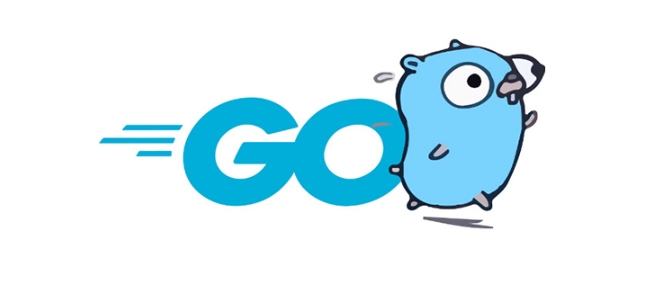In Go, new is used to assign primitive type or structure pointers and initialize to zero values, while make is dedicated to creating slices, maps, and channels that can be used directly. The specific differences are as follows: 1. new(T) allocates memory for type T and returns a pointer, which is suitable for basic types and structure initialization such as int and string; 2. make is used to create slices, maps, and chan, and at the same time completes internal structure initialization to ensure that the object can be used directly; 3. Struct{} can be used instead of new, which is more intuitive and concise; 4. Incorrect use will lead to inefficiency or runtime errors. If you use new to create slices, you will get nil value and need subsequent assignment, which will increase complexity.

In Go, make and new are keywords used to allocate memory, but their usage scenarios are completely different. Simply put:

-
new(T)is used to assign a zero value to type T and return a pointer to it. -
makeis specifically used to create slices, maps, and channels. It not only allocates memory, but also initializes internal structures.
Not knowing the difference between the two may lead to inefficiency or errors in the code. Let’s start from the actual purpose and see when to use which one.
new: Pointer and structure initialization suitable for basic types
The function of new is very simple, which is to allocate a default memory space to a certain type and return a pointer. for example:

p := new(int) fmt.Println(*p) // Output 0
This is useful when you need a pointer with an initial value of zero, especially when dealing with structures:
type User struct {
Name string
Age int
}
u := new(User)
u.Name = "Alice" This way you get a pointer to the User type, and all fields are initialized to their respective zero values.

Tip: Although you can also write
&User{}, the two are equivalent in most cases. However,newis more suitable for situations where you just want to get an empty structure pointer.
Make: specially created for slice, map, chan
make not only allocates memory, it also does some necessary initialization work to ensure that these types can be used directly. For example:
s := make([]int, 0, 5) // Create a slice with length 0 and capacity 5 m := make(map[string]int) // Create an empty map c := make(chan int) // Create an unbuffered channel
If you try to create these types with new , although there will be no syntax error, you will get a pointer to nil, and subsequent operations will have errors:
s := new([]int) fmt.Println(s == nil) // false, but *s is nil! *s = append(*s, 1) // It's OK to do this, but it's a bit troublesome
So, when you need a slice, map or chan that can be used directly, be sure to use make .
Use suggestions: Determine which one to use according to the type
To summarize, to determine whether to use make or new , you can refer to the following points:
- If you want to create a basic type or structure of pointer type , use
new - If you want to create slice, map or channel , use
makeregardless of whether there is an initial value or not - If you want to construct a structure with default values, you can use
&Struct{}instead ofnew
For example:
| Scene | Recommended method |
|---|---|
| Create an int pointer | new(int)
|
| Create a map | make(map[string]int)
|
| Initialize a structure pointer | new(MyStruct) or &MyStruct{}
|
| Create a slice with capacity | make([]int, 0, 10)
|
Basically that's it. Remember, new is a general memory allocator, and make is a constructor for a specific type (slice/map/chan). Using it correctly can make your code clearer and safer.
The above is the detailed content of How to use make vs new in Go. For more information, please follow other related articles on the PHP Chinese website!

Hot AI Tools

Undress AI Tool
Undress images for free

Undresser.AI Undress
AI-powered app for creating realistic nude photos

AI Clothes Remover
Online AI tool for removing clothes from photos.

Clothoff.io
AI clothes remover

Video Face Swap
Swap faces in any video effortlessly with our completely free AI face swap tool!

Hot Article

Hot Tools

Notepad++7.3.1
Easy-to-use and free code editor

SublimeText3 Chinese version
Chinese version, very easy to use

Zend Studio 13.0.1
Powerful PHP integrated development environment

Dreamweaver CS6
Visual web development tools

SublimeText3 Mac version
God-level code editing software (SublimeText3)

Hot Topics
 How can you handle JSON encoding and decoding effectively in Go?
Jun 11, 2025 am 12:02 AM
How can you handle JSON encoding and decoding effectively in Go?
Jun 11, 2025 am 12:02 AM
Effective handling of JSON in Go requires attention to structural labels, optional fields and dynamic analysis. Use the struct tag to customize the JSON key name, such as json:"name"; make sure the fields are exported for access by the json package. Use pointers or omitempty tags when processing optional fields to distinguish between unprovided values ??from explicit zeros. When parsing unknown JSON, map[string]interface{} can be used to extract data with type assertions. The default number will be parsed as float64. json.MarshalIndent can be used to beautify the output during debugging, but the production environment should avoid unnecessary formatting. Mastering these techniques can improve the robustness and ability of your code
 How can Go programs interact with C code using Cgo? What are the trade-offs?
Jun 10, 2025 am 12:14 AM
How can Go programs interact with C code using Cgo? What are the trade-offs?
Jun 10, 2025 am 12:14 AM
Go programs can indeed interact with C code through Cgo, which allows Go to call C functions directly. When using Cgo, just import the pseudo-package "C" and embed C code in the comments above the import line, such as including C function definitions and calling them. In addition, external C library can be linked by specifying link flags such as #cgoLDFLAGS. However, there are many issues to pay attention to when using Cgo: 1. Memory management needs to be processed manually and cannot rely on Go garbage collection; 2. Go types may not match C types, and types such as C.int should be used to ensure consistency; 3. Multiple goroutine calls to non-thread-safe C libraries may cause concurrency problems; 4. There is performance overhead for calling C code, and the number of calls across language boundaries should be reduced. Cgo's lack
 How can Go applications be cross-compiled for different operating systems and architectures?
Jun 11, 2025 am 12:12 AM
How can Go applications be cross-compiled for different operating systems and architectures?
Jun 11, 2025 am 12:12 AM
Yes,Goapplicationscanbecross-compiledfordifferentoperatingsystemsandarchitectures.Todothis,firstsettheGOOSandGOARCHenvironmentvariablestospecifythetargetOSandarchitecture,suchasGOOS=linuxGOARCH=amd64foraLinuxbinaryorGOOS=windowsGOARCH=arm64foraWindow
 How does Go handle pointers, and how do they differ from pointers in C/C ?
Jun 10, 2025 am 12:13 AM
How does Go handle pointers, and how do they differ from pointers in C/C ?
Jun 10, 2025 am 12:13 AM
Go simplifies the use of pointers and improves security. 1. It does not support pointer arithmetic to prevent memory errors; 2. Automatic garbage collection and management of memory without manual allocation or release; 3. The structure method can seamlessly use values ??or pointers, and the syntax is more concise; 4. Default safe pointers to reduce the risk of hanging pointers and memory leakage. These designs make Go easier to use and safer than C/C, but sacrifice some of the underlying control capabilities.
 What are the implications of Go's static linking by default?
Jun 19, 2025 am 01:08 AM
What are the implications of Go's static linking by default?
Jun 19, 2025 am 01:08 AM
Go compiles the program into a standalone binary by default, the main reason is static linking. 1. Simpler deployment: no additional installation of dependency libraries, can be run directly across Linux distributions; 2. Larger binary size: Including all dependencies causes file size to increase, but can be optimized through building flags or compression tools; 3. Higher predictability and security: avoid risks brought about by changes in external library versions and enhance stability; 4. Limited operation flexibility: cannot hot update of shared libraries, and recompile and deployment are required to fix dependency vulnerabilities. These features make Go suitable for CLI tools, microservices and other scenarios, but trade-offs are needed in environments where storage is restricted or relies on centralized management.
 How do I create a buffered channel in Go? (e.g., make(chan int, 10))
Jun 20, 2025 am 01:07 AM
How do I create a buffered channel in Go? (e.g., make(chan int, 10))
Jun 20, 2025 am 01:07 AM
To create a buffer channel in Go, just specify the capacity parameters in the make function. The buffer channel allows the sending operation to temporarily store data when there is no receiver, as long as the specified capacity is not exceeded. For example, ch:=make(chanint,10) creates a buffer channel that can store up to 10 integer values; unlike unbuffered channels, data will not be blocked immediately when sending, but the data will be temporarily stored in the buffer until it is taken away by the receiver; when using it, please note: 1. The capacity setting should be reasonable to avoid memory waste or frequent blocking; 2. The buffer needs to prevent memory problems from being accumulated indefinitely in the buffer; 3. The signal can be passed by the chanstruct{} type to save resources; common scenarios include controlling the number of concurrency, producer-consumer models and differentiation
 How can you use Go for system programming tasks?
Jun 19, 2025 am 01:10 AM
How can you use Go for system programming tasks?
Jun 19, 2025 am 01:10 AM
Go is ideal for system programming because it combines the performance of compiled languages ??such as C with the ease of use and security of modern languages. 1. In terms of file and directory operations, Go's os package supports creation, deletion, renaming and checking whether files and directories exist. Use os.ReadFile to read the entire file in one line of code, which is suitable for writing backup scripts or log processing tools; 2. In terms of process management, the exec.Command function of the os/exec package can execute external commands, capture output, set environment variables, redirect input and output flows, and control process life cycles, which are suitable for automation tools and deployment scripts; 3. In terms of network and concurrency, the net package supports TCP/UDP programming, DNS query and original sets.
 How does Go ensure memory safety without manual memory management like in C?
Jun 19, 2025 am 01:11 AM
How does Go ensure memory safety without manual memory management like in C?
Jun 19, 2025 am 01:11 AM
Goensuresmemorysafetywithoutmanualmanagementthroughautomaticgarbagecollection,nopointerarithmetic,safeconcurrency,andruntimechecks.First,Go’sgarbagecollectorautomaticallyreclaimsunusedmemory,preventingleaksanddanglingpointers.Second,itdisallowspointe






